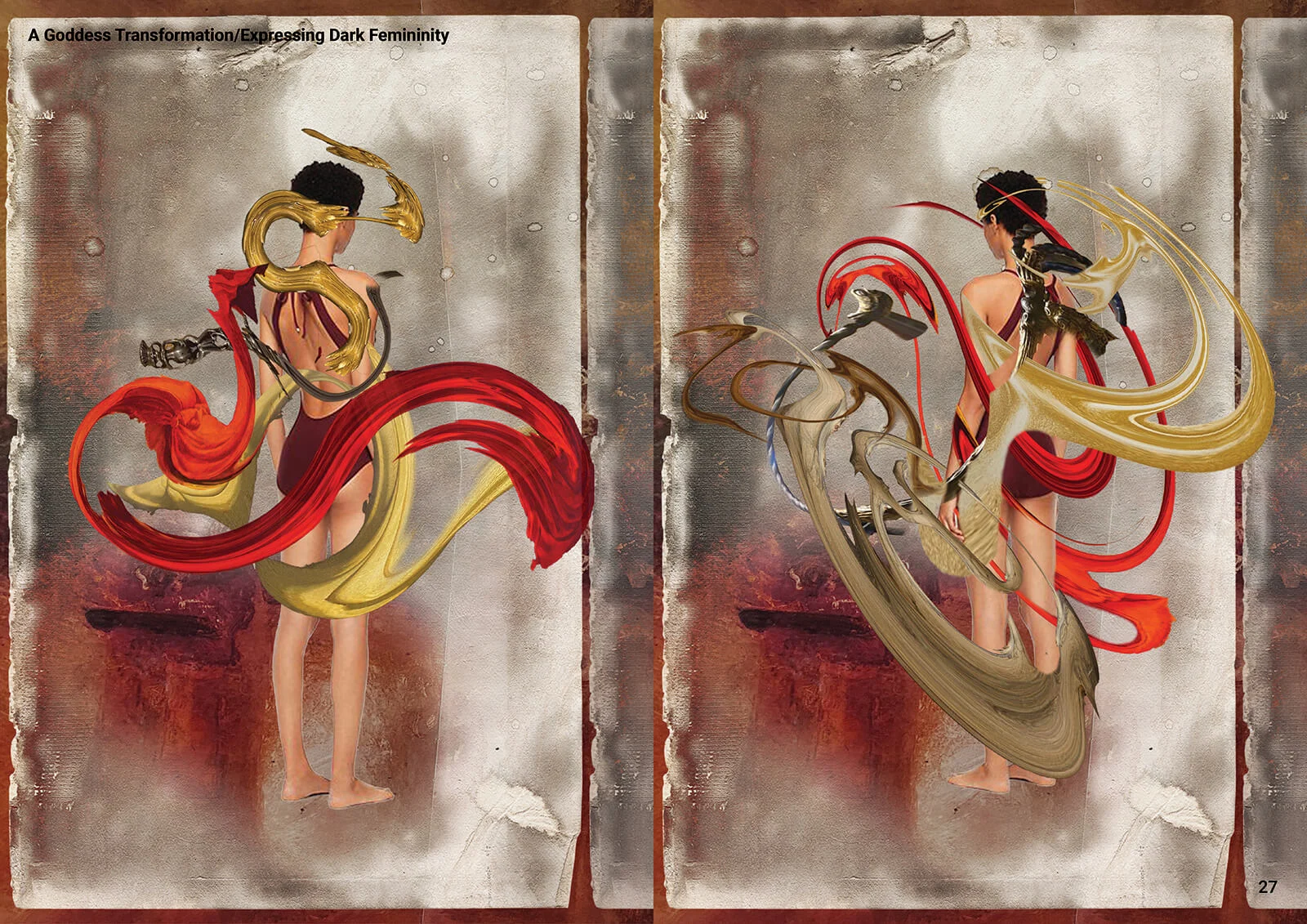
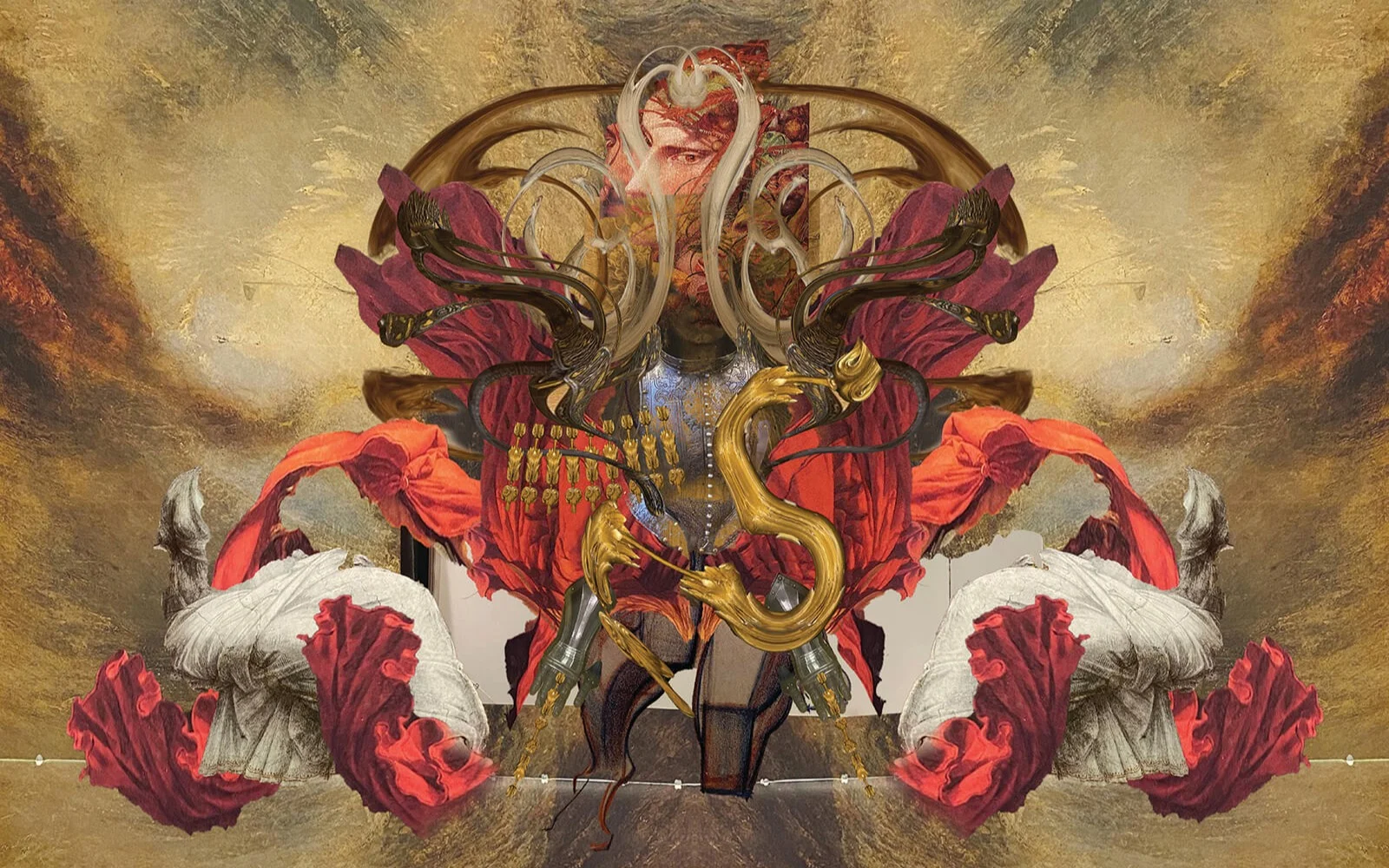
Born and raised in Ramallah, Ayham Hassan Musleh is a young Palestinian studying BA Fashion Design Womenswear at his dream school, Central Saint Martins (CSM). His practice is an exploration of his existence under military occupation, how it’s shaped his identity and impacted his culture. Ayham tells Sunayah Arshad how he’s determined to explore the history of Palestinian fashion, and reshape its future.
Throughout his entire life, Ayham Hassan Musleh has lived under Israel's military occupation of Palestine. The deep-rooted Israeli-Palestinian conflict is one of the worlds largest and most enduring, resulting in countless deaths, unlawful attacks, oppression, displacement and abuse of power. With the normalization of death and war between his community and Israel, fighting for freedom became everyday life for Ayham. Around the age of 14, he began to take an interest in fashion, influenced by European fashion, Alexander McQueen and Lady Gaga. Particularly inspired by its fantasy element and how fashion is used to create a new reality, he recalls, “It was difficult to process a lot of things happening around me and fashion was a way to subconsciously discuss what happened when I was young, what’s happening to the people I care about and what's happening to my heritage and culture.”
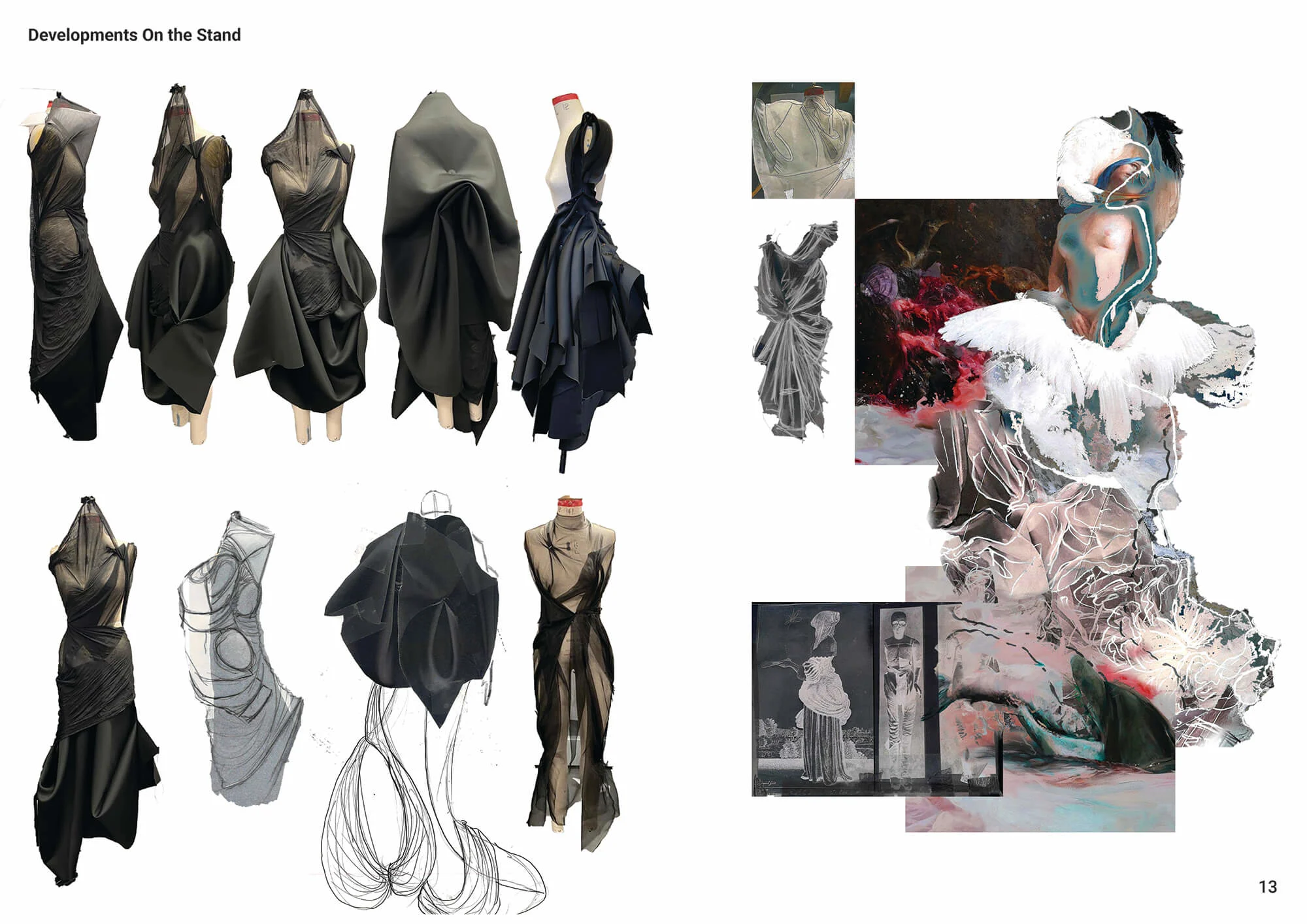
Fascinated by the representation of women in different societies, Ayham quickly discovered how crucial they were to Palestinian fashion, crediting this as his main reason for wanting to create womenswear. “From crafts to embroidery, it was all created by women and they had incredible influence,” he says. “In Palestinian art, the female figure is glorified. It's the motherland of everything, the motherland of fighting, of freedom”.
While reflecting on the initial culture shock and complications of moving from Ramallah to London, Ayham expresses how it wasn’t until then that he understood what it meant to be a minority and what it meant to have privilege, especially in fashion. Describing himself as an “extension of his culture”, he felt a need to comment on his Palestinian roots through his practice. Though, as an international student with a deeply contrasting experience to many UK citizens, he ran into difficulty trying to express his work to tutors; “Even though CSM really supports Palestine, it was difficult for me to actually discuss my concepts, my research and my references because the teachers don't have the same experience,” he says.
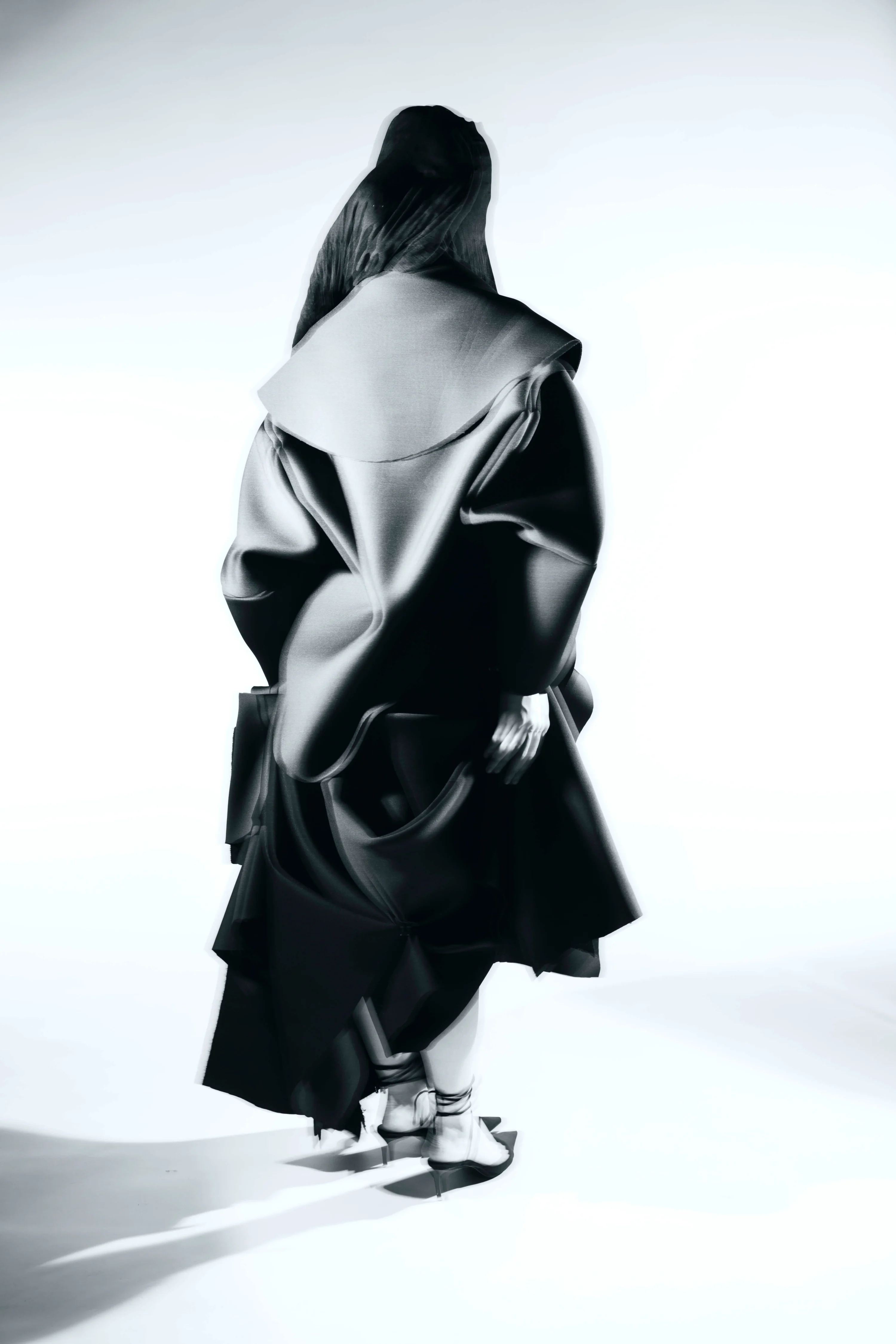
After receiving little help from CSM or the UK government, Ayham was forced to set up a fundraiser to pay for his tuition and living costs. “It's so difficult to actually get funded, to just do what you know, and what you excel in,” he says. “The scholarship system is very exclusive, very selective and a bit poor to be honest.” We collectively consider how large businesses and institutions have the capacity to support more minorities and young creatives, yet for some reason, don’t. Although some opportunities exist in the form of singular scholarships, one-off grants and unpaid internships, they aren’t accessible or sustainable for international students and minorities from lower socio-economic backgrounds.
Aside from his personal interest in fashion, Ayham explains there isn’t a strong fashion scene in Palestine, which is something he hopes to change while making his mark on the UK industry. “I really want to build a fashion industry that can support people locally and internationally,” he says. “I want to collaborate and to work with artisans. I want to find my own cycle of production so it can be more sustainable, environmentally conscious and ethical.” Despite each hurdle, Ayham couldn’t be more excited to be studying at CSM, and he acknowledges that overall it’s a melting pot of cultures and identities, and while there isn’t much Arab representation, it’s bursting with creativity—something he deeply appreciates. “I'm learning so much from everyone around me,” he says. “It’s an interesting environment, and creatively it’s a very enriching experience.”
A Funeral For Hungry Souls
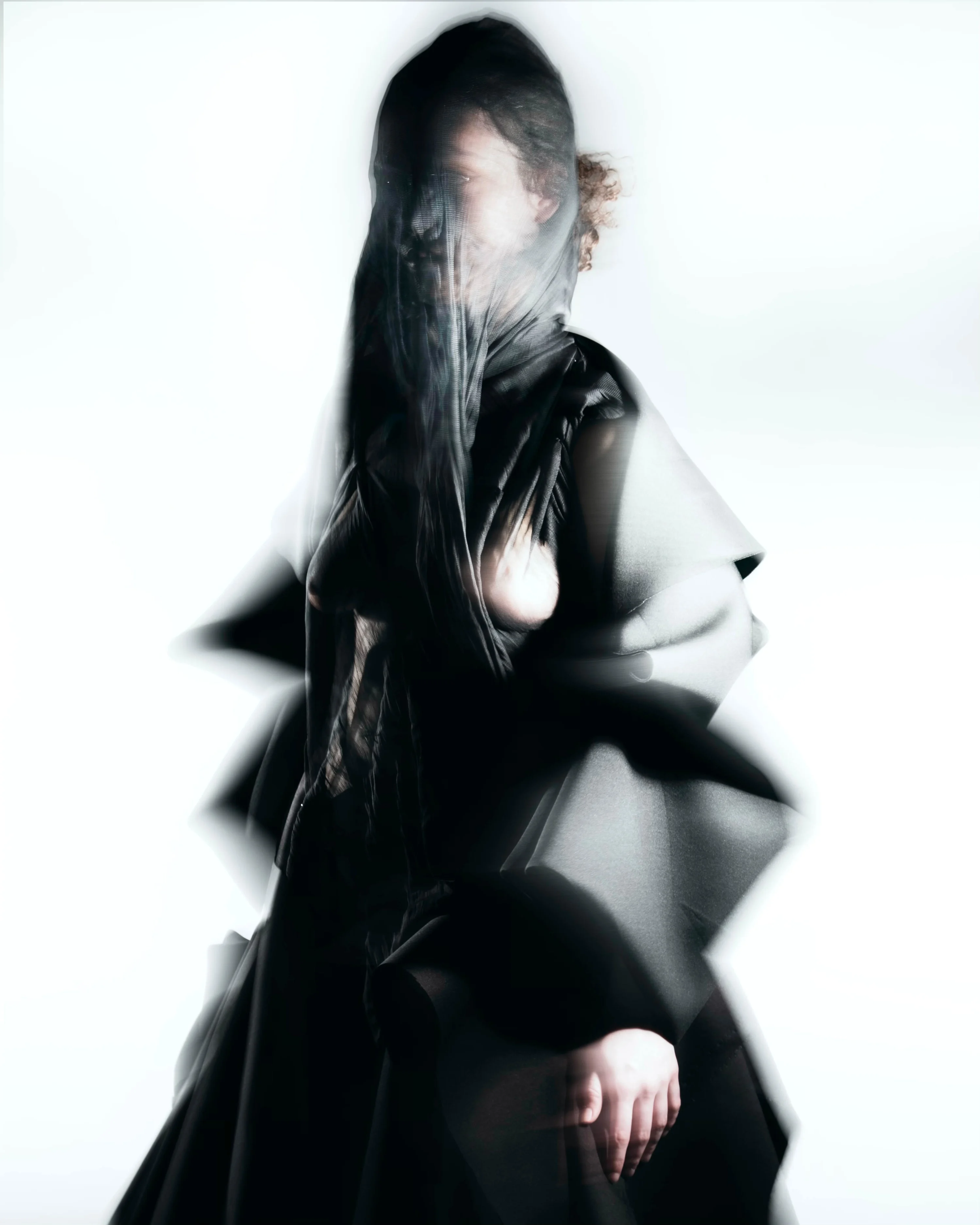
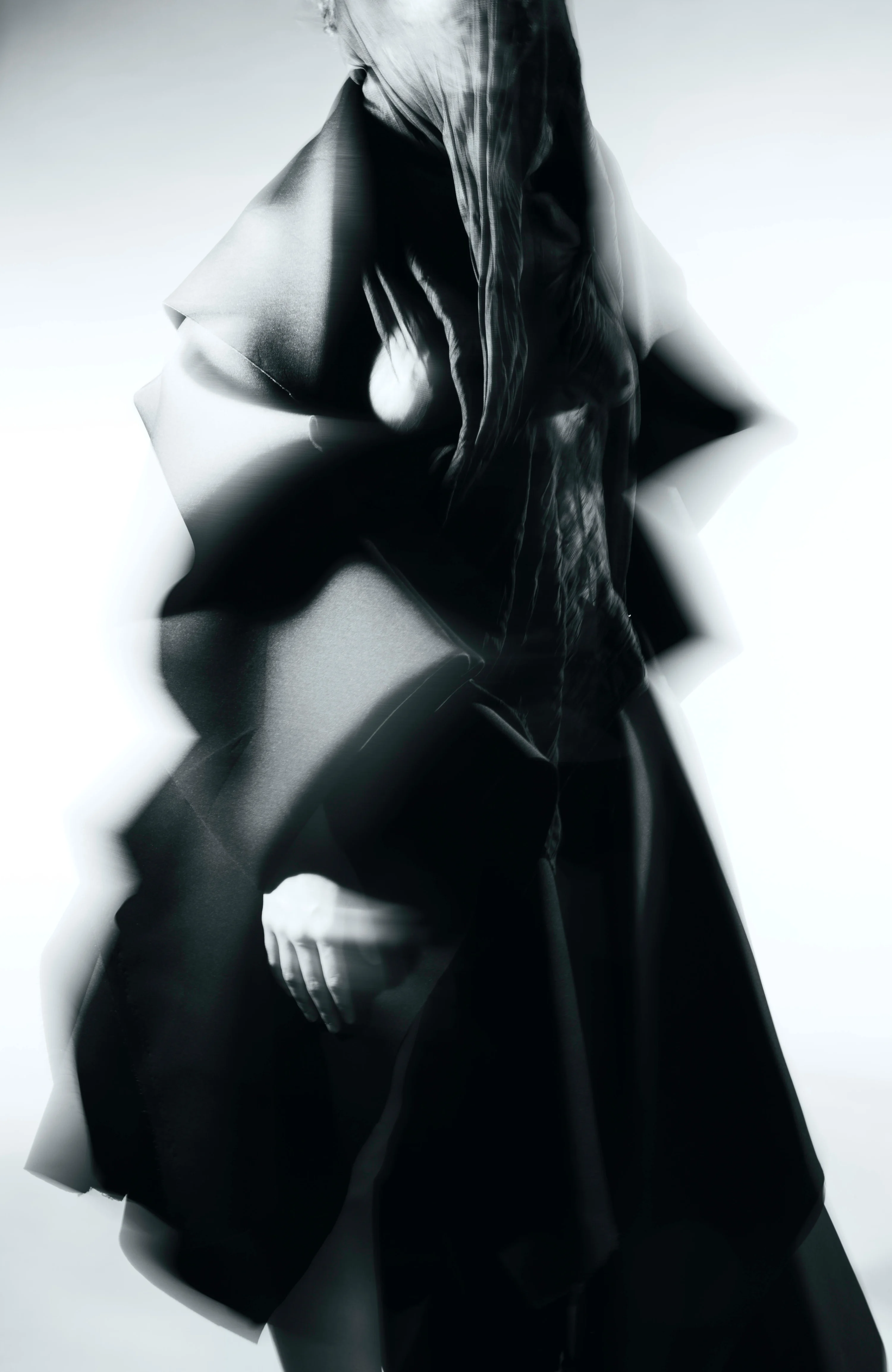
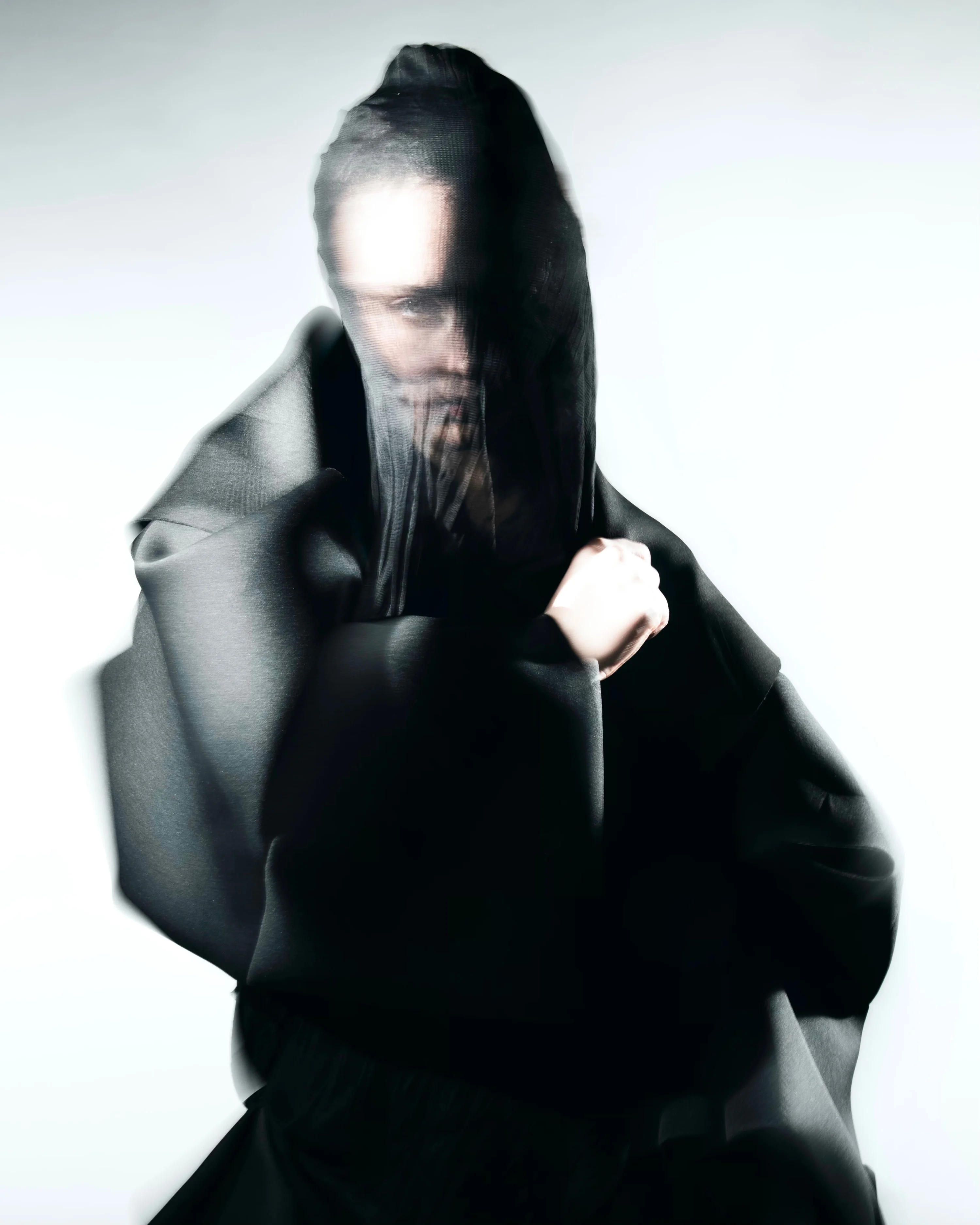
This collection draws inspiration from the 171-day hunger strike of Hisham Abu Hawash, a Palestinian man imprisoned without charge. Here, Ayham uses a darker color palette and variety of silhouettes to explore the normalization of death in Palestine, the glorification of martyrs and the notion of the body and soul disconnecting, referring to Abu Hawash’s near-death experience and Ayham’s own out-of-body experience after being on kidney dialysis as a teen.
“There’s a saying in Palestine—‘holding your soul in your hands’—because every day you leave the house, you don't know if you're actually coming back to it,” Ayham says. After his brother sadly passed away at a young age, the family planted a palm tree at the head of the grave, a cultural tradition said to bring comfort to the dead. Over time, the tree caught a disease and began turning shades of dark brown, black and grey. “It was a time when we disconnected a bit with his soul,” Ayham says. He recalls how he discovered a link between his work and death, and found inspiration through the plant’s decaying leaves, which he used in collages as a reference for color, shape and texture.
Exploring the relationship between something fleshy and alive and dark and deteriorating, Ayham focused on silhouettes and draping fabric to contrast light and dark shades, trying to reflect how a hunger strike affects the structure of the body.

Palestine Across Borders
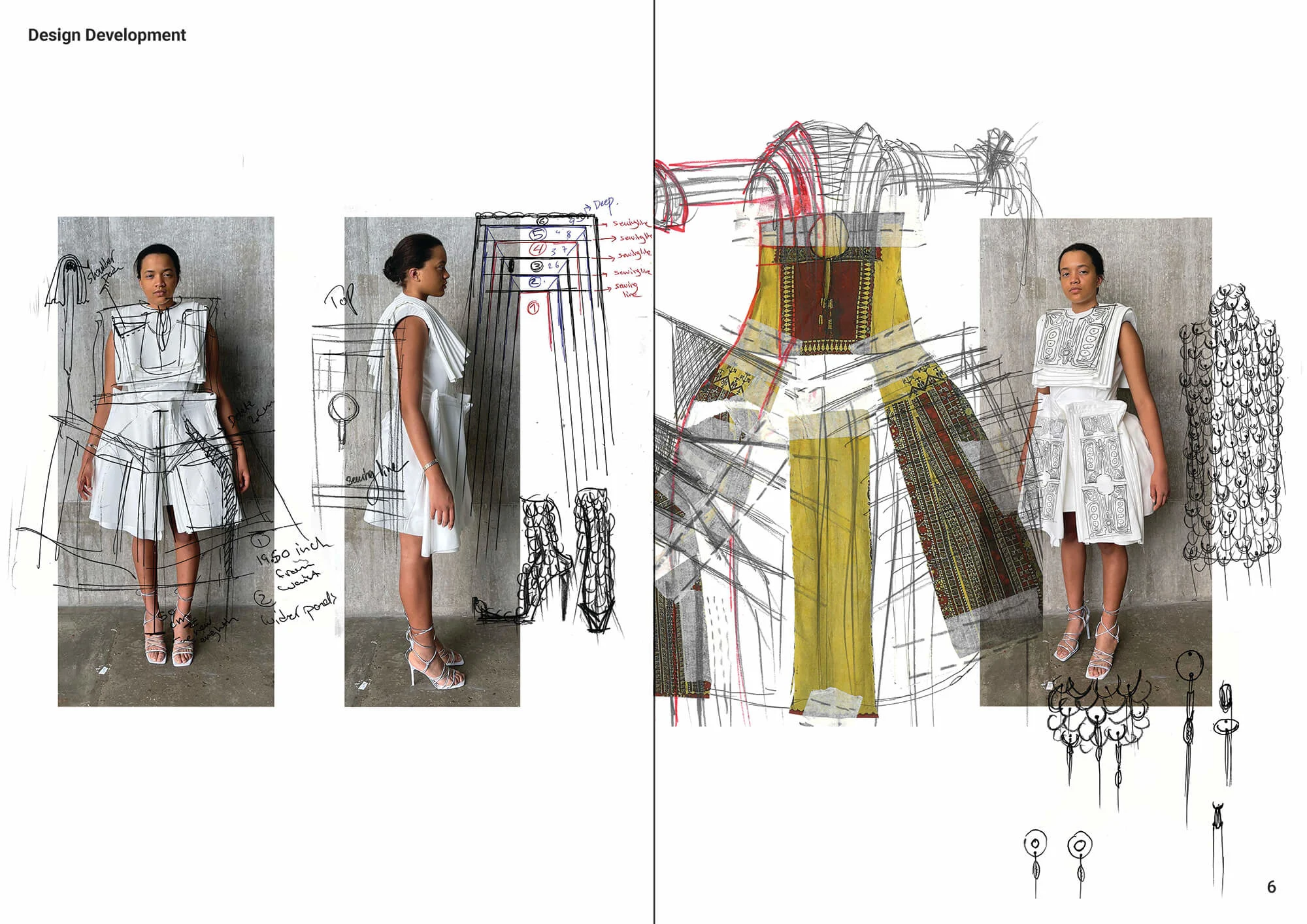
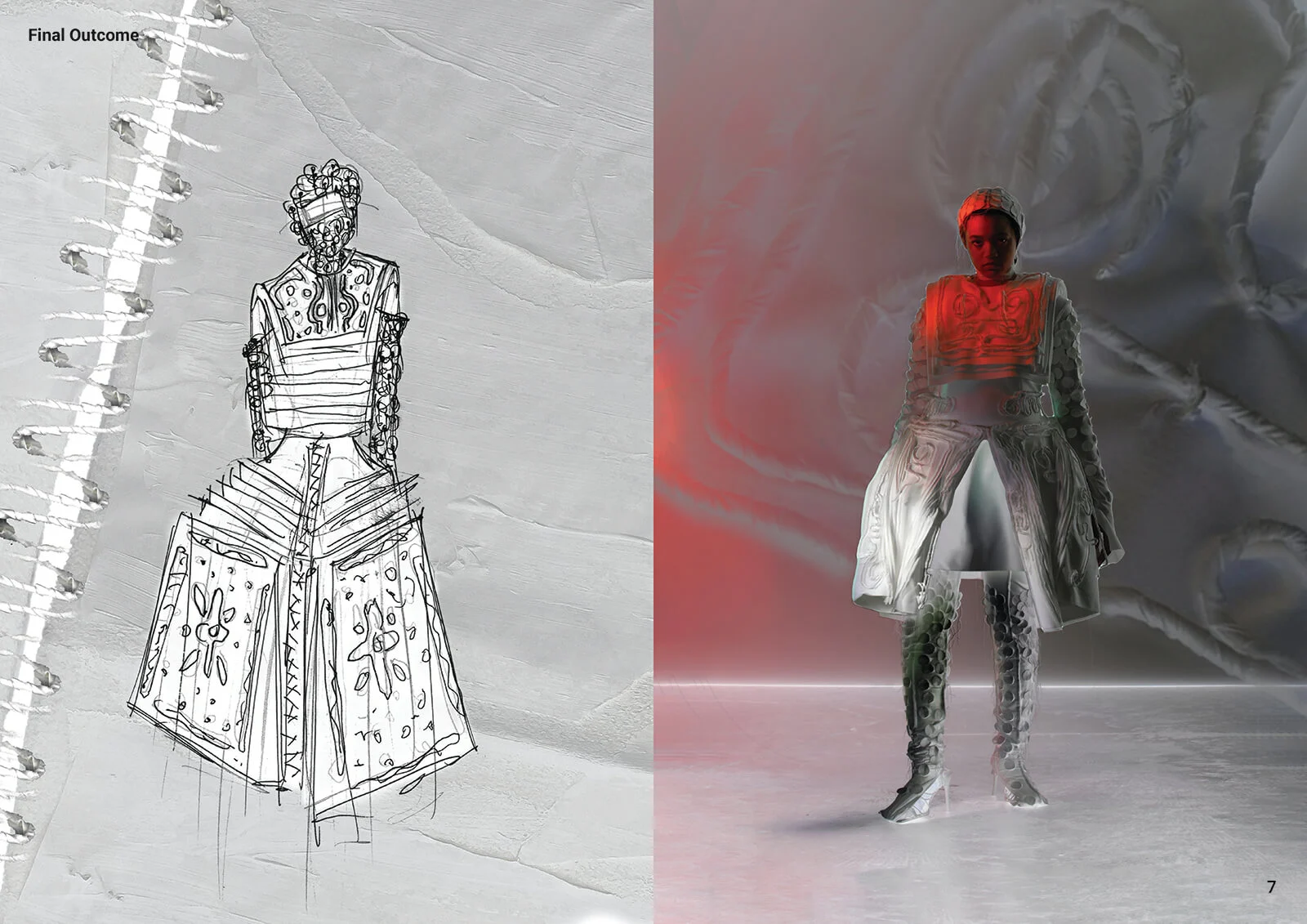
Describing this as his “white project,” this body of work was inspired by Ayham’s trip to London. With the military occupation of Palestine enforcing strict borders, Ayham considered the impact of borderlines and how they can dissolve a culture. “When I was young, I remember everyone wore traditional Palestinian costumes, and then suddenly that stopped and people started wearing jeans,” he says. Influenced by sci-fi culture, architecture and elements of futurism, Ayham tapped into a deconstructed aesthetic, representing his visions through white lines and embroidery, “inspired by the landscape of Palestine.” In response to the borders he witnessed throughout his upbringing, Ayham aimed to represent a warrior-like uniform that would be worn by someone coming back from fighting in the future, using structured, layered white fabric and linear patterns.
Using collage and illustration, Ayham toyed with a range of textures and patterns to create his futuristic take on Palestinian costumes: “It’s like Palestine but on a different planet.”
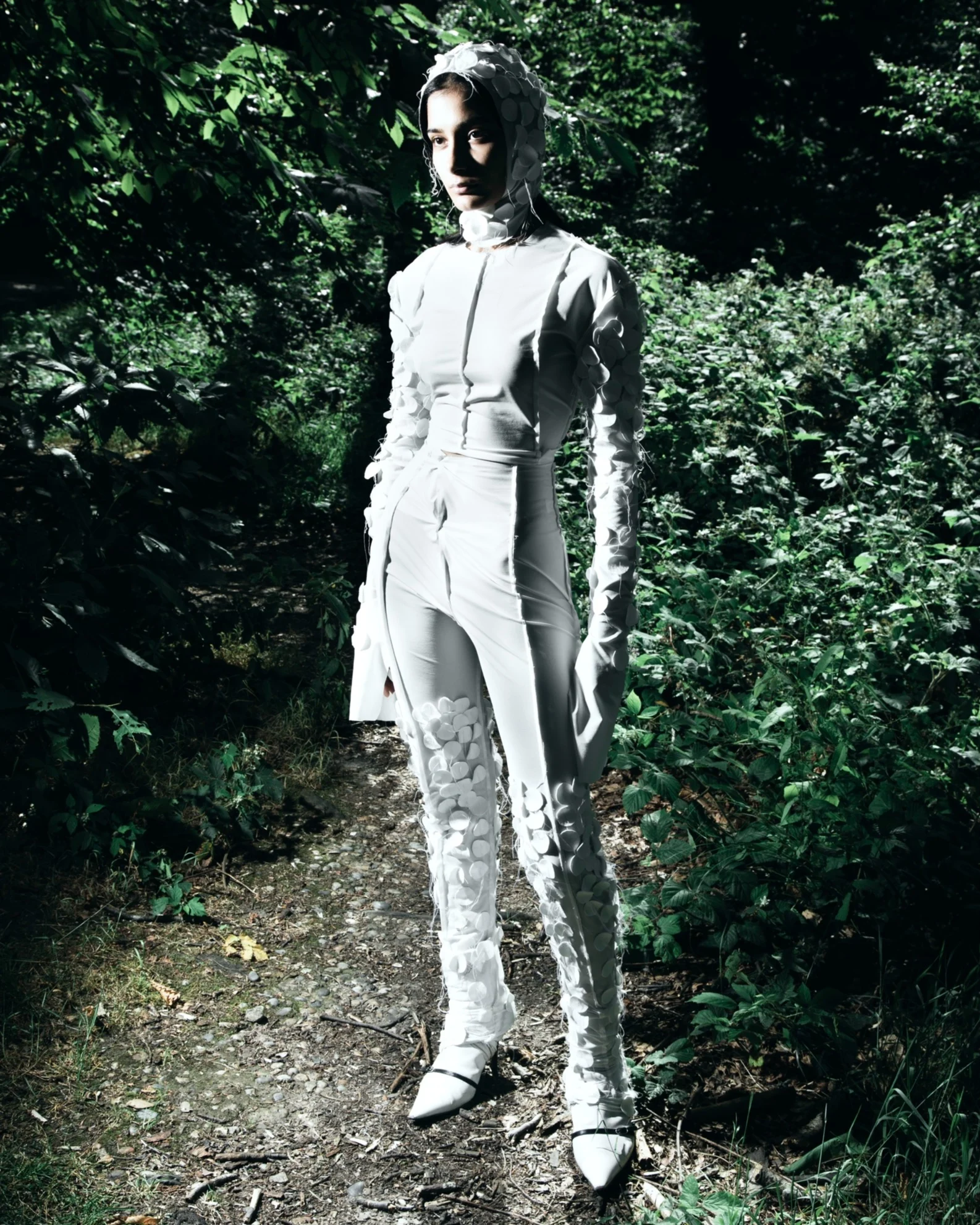
Love in the Dark (Bower Bird)
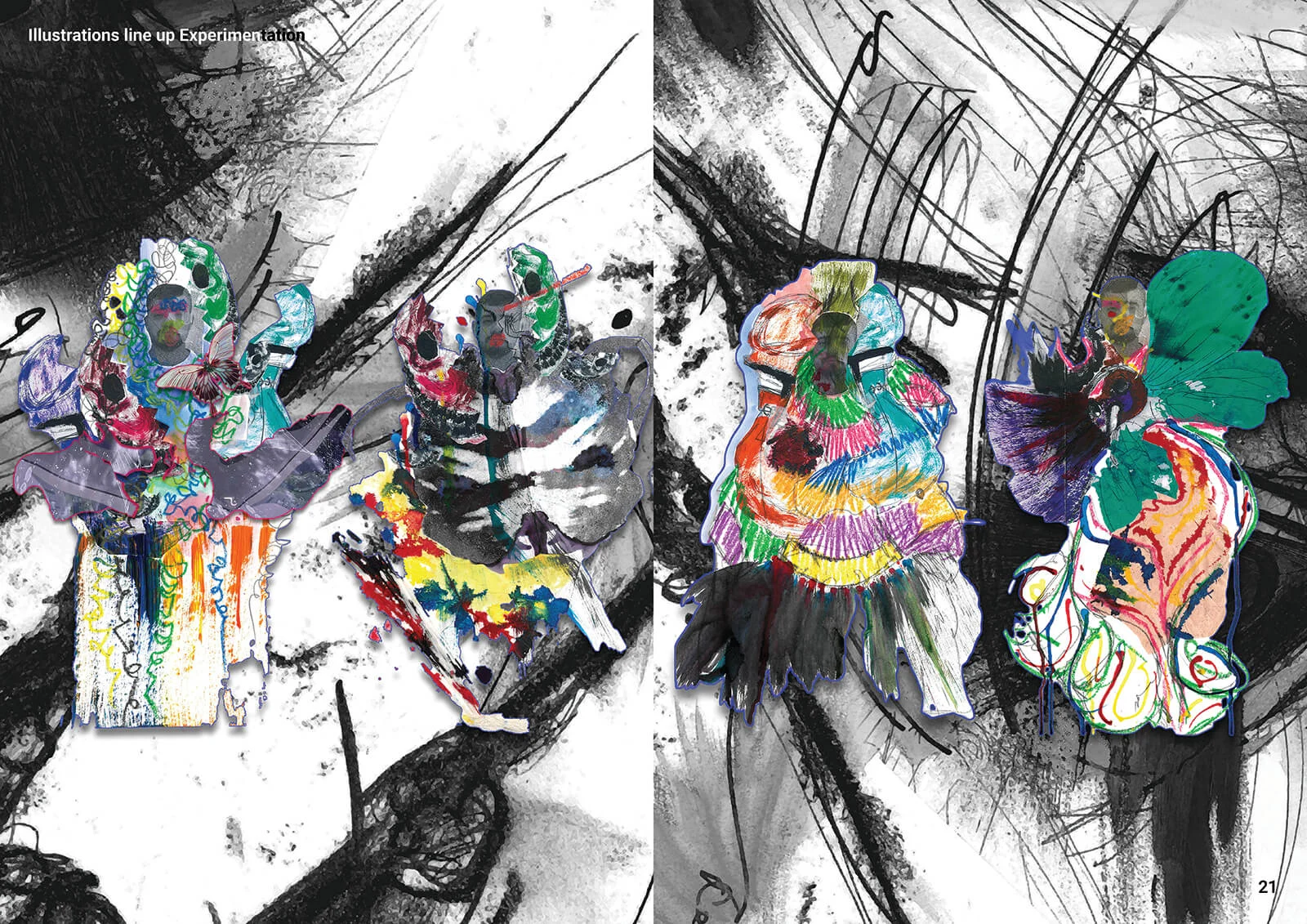
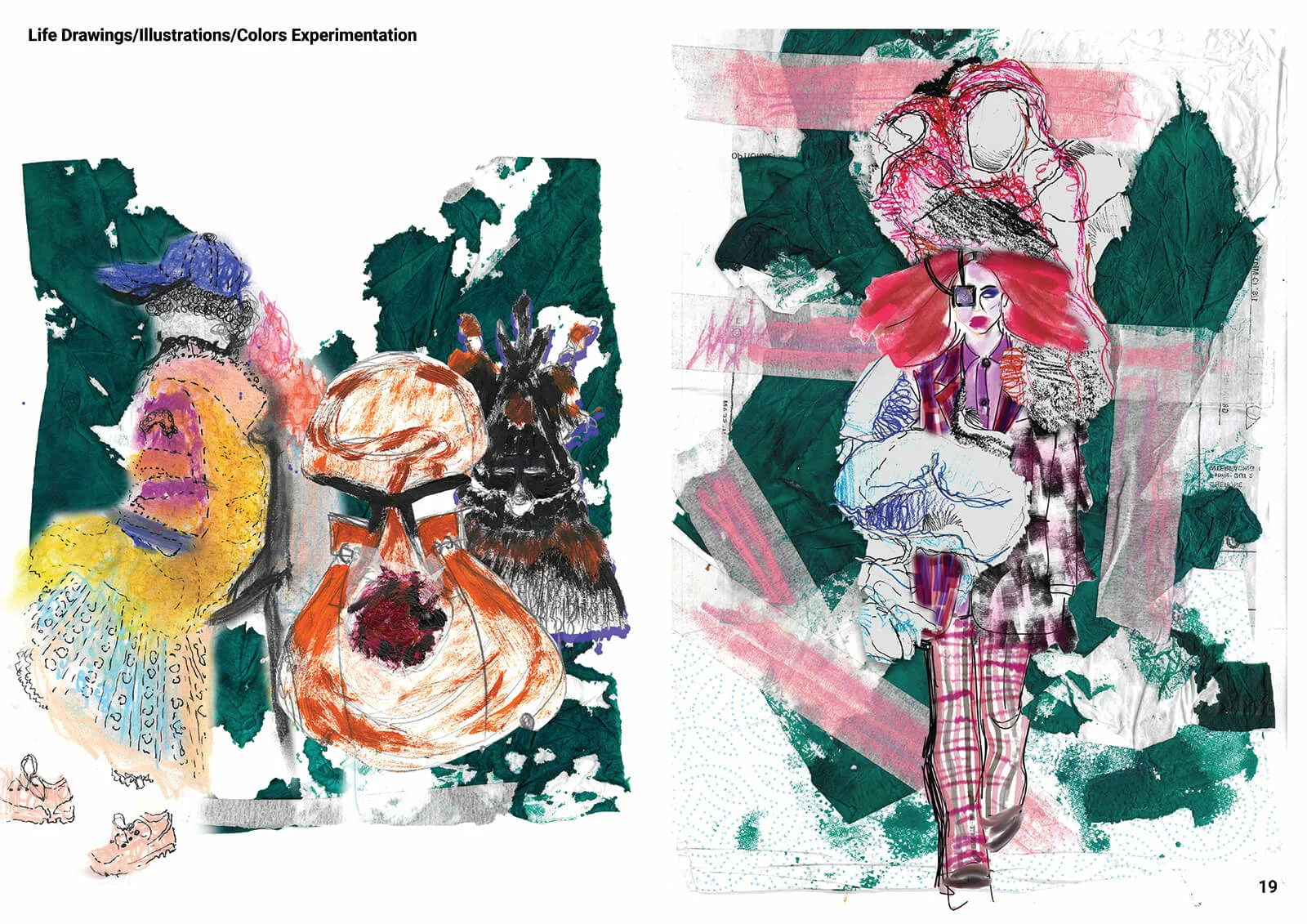
This project began with illustrations of the Bowerbird seen in various galleries and museums across London.
Describing the bird’s courtship process of attracting a female by collecting colorful objects, Ayham shares how color, to him, is his “feminine self.” Gender and sexuality wasn’t something that he was personally able to consider until he moved to London, so this project illustrates his fluidity and his feminine/masculine self. Using fabric and movement to represent the transformation from a dark masculine entity into a colorful feminine self, Ayham expressed this project through a dance performed in front of classmates at CSM.
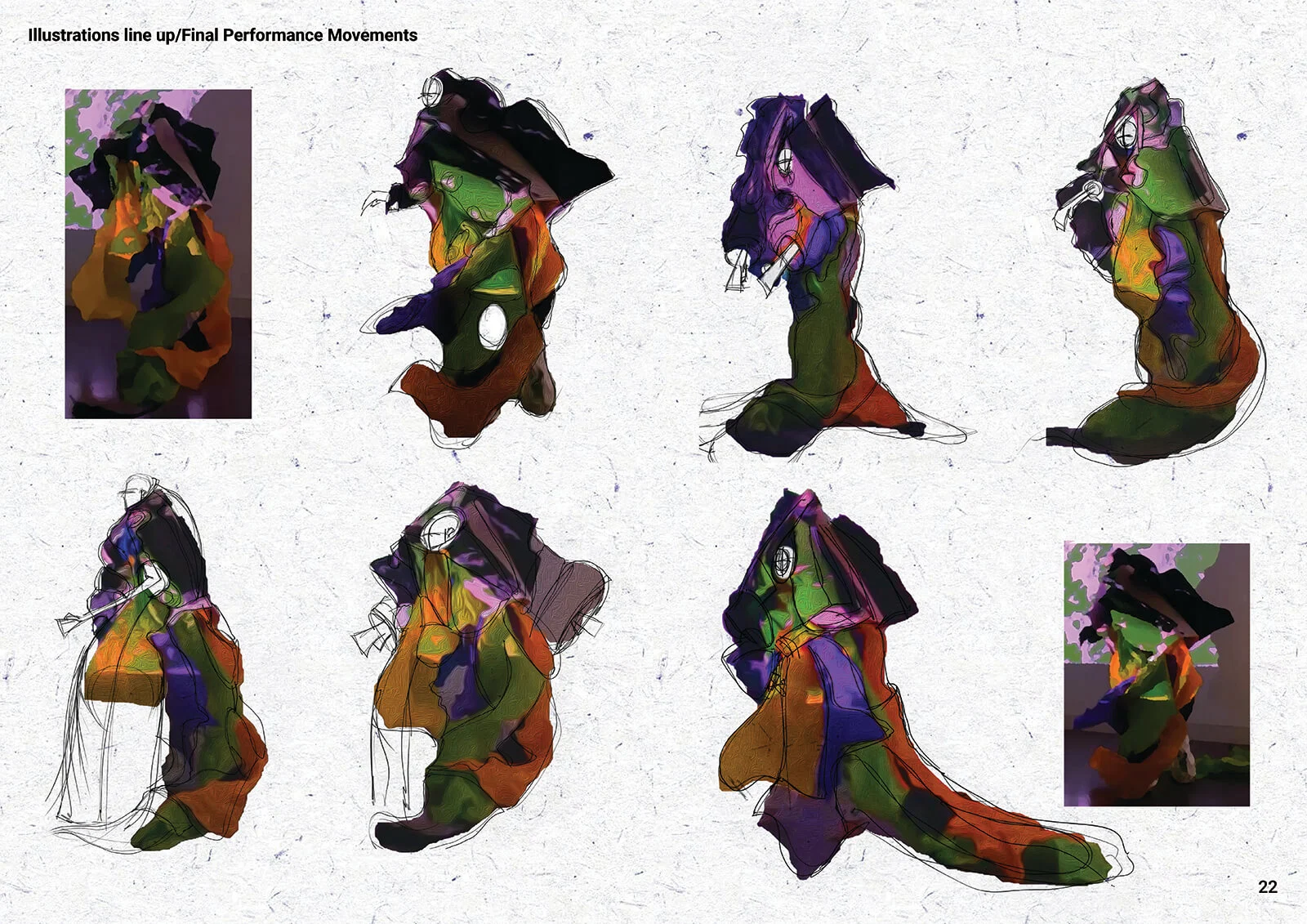
A Goddess (Dark feminine energy)
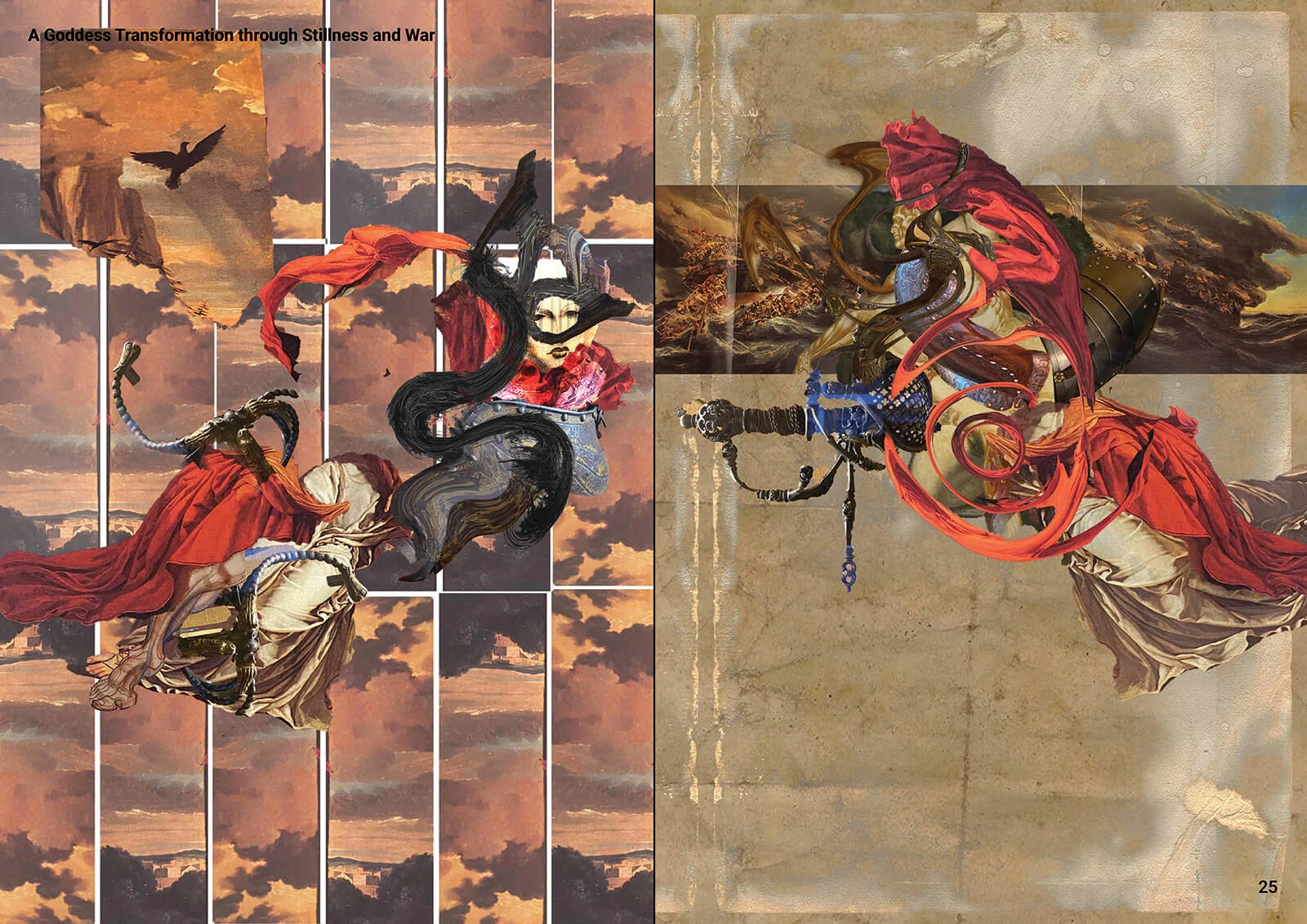
“I believe that males have dark feminine energy” Ayham declares. As the only male in his group jewelry project at CSM, Ayham tells me how this project exposed him to a more vulnerable side of his identity.
Inspired by research from the Hayward Gallery, combined with the color palette of Renaissance art and artwork from The Wallace Collection, this project explored a warrior-like, goddess entity. “My goddess was a female born in the middle of the earth, her hands reaching up to the sun. She’s strong, she’s feminine, and she smells like the perfume of Chanel Mademoiselle, my mother’s favourite perfume.”
Through collage, Ayham considered the transformation of his goddess as a warrior in different environments, looking at how she could be represented through clothing and silhouettes.
